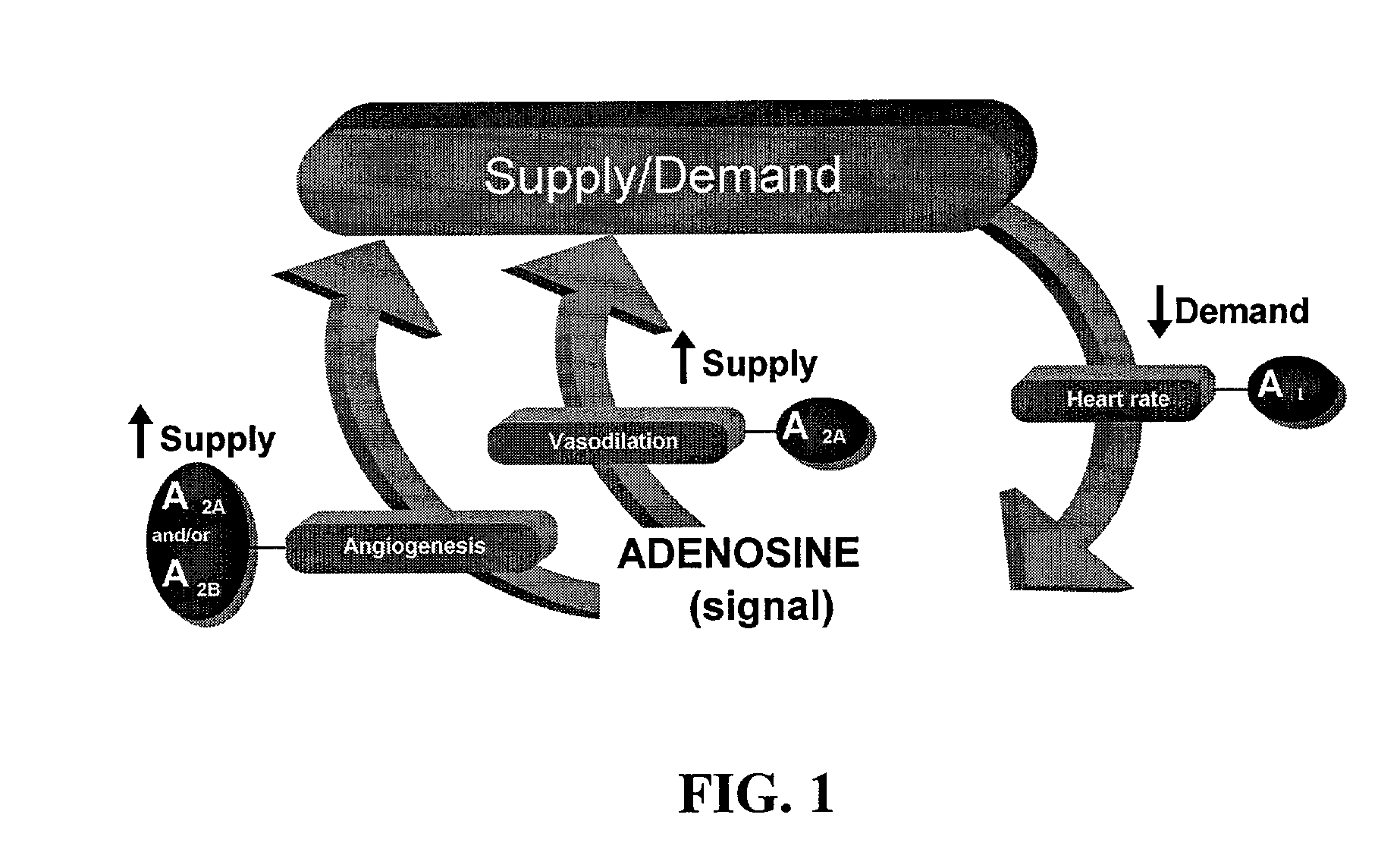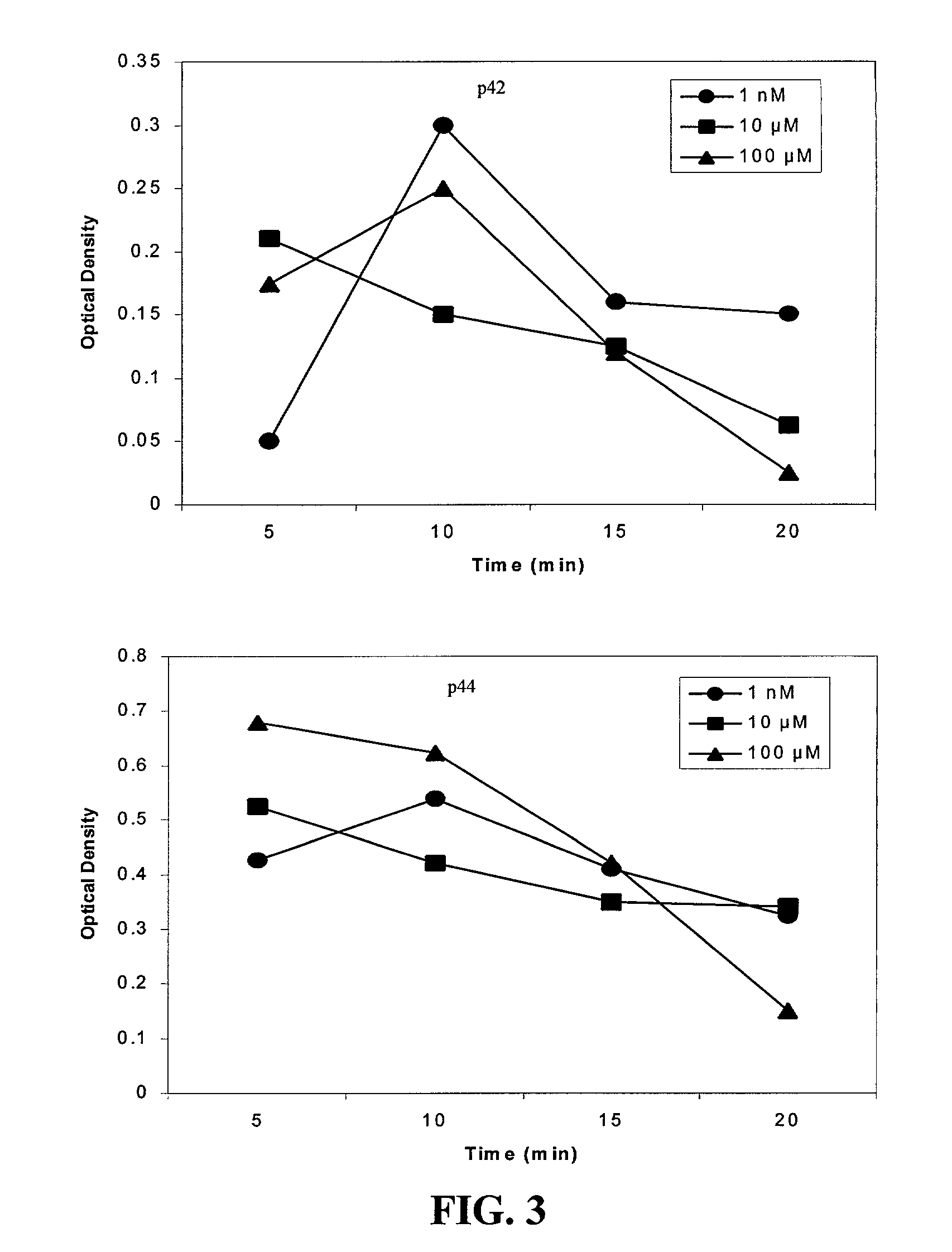Adeno-associated virus-delivered ribozyme compositions and methods for the treatment of retinal diseases
- Summary
- Abstract
- Description
- Claims
- Application Information
AI Technical Summary
Benefits of technology
Problems solved by technology
Method used
Image
Examples
example 1
5.1 Example 1
Construction of Vectors and Expression in Target Cells
5.1.1 rAAV-Ribozyme Constructs
[0159] Recombinant AAV constructs were based on the pTR-UF2 vector (Zolotukhin et at., 1996). They resemble the vector used by Flannery et al. (1997) to direct GFP expression to rat photoreceptors except that a 691 bp fragment of the proximal bovine rod opsin promoter replaced the 472 bp murine rod opsin promoter and the ribozyme gene replaced the gfp gene. The bovine promoter fragment contains three proximal promoter elements and the endogenous transcriptional start site at its 3′ end (DesJardin and Hauswirth, 1996) and supports high efficiency, rat photoreceptor-specific expression in vivo. Active and inactive ribozymes were designed, tested and cloned as described above. Each ribozyme gene was followed by an internally cleaving hairpin ribozyme derived from plasmid pHC (Altschuler et al., 1992) resulting in ribozyme cassettes of 140-152 bp. Self cleavage at the internal cutting sit...
example 2
5.2 Example 2
Endothelial Cell Proliferation in Response to Adenosine Analogues
[0163] The subtype of adenosine receptor (A2B) that mediates the proliferative effect of adenosine on HREC was determined by the following studies. The non-selective adenosine receptor agonist NECA, after 48 hr of exposure, induced a concentration-dependent increase of DNA synthesis in HRECs, as indicated by bromodeoxyuridine (BrdU) incorporation. In contrast, neither the A2A adenosine receptor agonist CGS21680 (2-p-(2-carboxyethyl) phenethylamino-5′-N-ethylcarboxamidoadenosine) at concentrations ranging from 10 nM to 10 μM, nor the A1 adenosine receptor agonist CPA (N6-cyclopentyladenosine) at concentrations ranging from 10 nM to 10 μM increased BrdU incorporation by HRECs. The addition of the adenosine receptor antagonist XAC (xanthine amine congener) at 10 μM completely prevented the NECA-stimulated BrdU incorporation. In contrast, neither the selective A1 adenosine receptor antagonist CPX (8-cyclopent...
example 3
5.3 EXAMPLE 3
Development and Testing of Ribozyme Targeting A2B Adenosine Receptor mRNA
[0173] The cleavage site of the A2B antisense, between nucleotides 183 and 184, was demonstrated to be accessible within the secondary structure of the native mrRNA by the antisense studies. A hammerhead ribozyme designed to cleave this message was then synthesized along with a 14-nucleotide target sequence (FIG. 7). This target was end-labeled in a standard kinase reaction with 32P, then incubated along with ribozyme (1:1 molar ratio) for 1, 2, 3, 4, 5, 10, 30, 60, 120 and 180 min. Nearly 90% of target was cleaved by 60 min (FIG. 7), demonstrating the efficacy and rapid action of this ribozyme in a cell-free assay system. The ribozyme's effects on HREC proliferation and VEGF synthesis in response to adenosine receptor activation was examined. HRECs were plated in serum-free medium overnight to adhere and make them quiescent. Unattached cells were then removed by washing with Hank's balanced salt ...
PUM
| Property | Measurement | Unit |
|---|---|---|
| Molar density | aaaaa | aaaaa |
| Molar density | aaaaa | aaaaa |
| Molar density | aaaaa | aaaaa |
Abstract
Description
Claims
Application Information
 Login to View More
Login to View More - R&D
- Intellectual Property
- Life Sciences
- Materials
- Tech Scout
- Unparalleled Data Quality
- Higher Quality Content
- 60% Fewer Hallucinations
Browse by: Latest US Patents, China's latest patents, Technical Efficacy Thesaurus, Application Domain, Technology Topic, Popular Technical Reports.
© 2025 PatSnap. All rights reserved.Legal|Privacy policy|Modern Slavery Act Transparency Statement|Sitemap|About US| Contact US: help@patsnap.com



